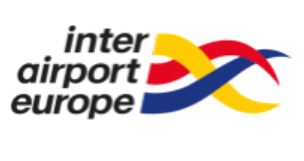
When COVID-19 struck, air travel almost came to a halt. Countries had to act swiftly and decisively. Strict national lockdowns and stringent travel restrictions combined with the adoption of innovative technologies such as contactless travel helped curb the spread of the pandemic across the world. But many questions linger.
Mandatory social distancing
Over the recent months, as more and more countries have gradually opened up air travel by imposing mandatory social distancing. But many questions linger.
- How to implement social distancing without compromising on the passenger experience, in the hustle and bustle of a crowded airport setup?
- Implementing social distancing while passenger numbers are still low, isn’t such a challenge. What happens when the passenger volumes grow and space is a constraint?
- How can the aviation industry enforce restrictions when the definitions of social and the regulations around the word vary considerably?
The recent news on the challenge of limiting human-to-human contact and ensuring social distancing at arrivals only makes matters worse. Passengers being crammed into immigration queues or crowding around baggage belts to collect their luggage – it’s not what anyone needs to see especially when passenger confidence is so fragile. Trust once lost is hard to regain.
Rethink Resource Management in a COVID-19 world
In the short- to mid-term, as the pandemic looms large, technology can come to the rescue. Here’s where Resource Management Systems (RMS) can work wonders. Don’t think of RMS and how it was traditionally implemented – a way to help airports optimize their investments to accommodate more flights, passengers and baggage. Instead, look at how RMS can spread passenger flow around the airport to successfully implement social distancing, even as airports optimize resource utilization by ensuring equipment and assets are used evenly. Moreover, this can reduce overuse and depreciation or early amortization, and in turn contribute to an airport’s financial stability, key to their recovery.
Next-generation Resource Management System
Some airports have already approached ADB SAFEGATE Airport Systems to resolve their social distancing and operational challenges. Our next-generation Resource Management System (RMSX) is a Software-as-a-Service solution offers a more automated and simpler way for airports to proactively plan daily operations in real-time. By creating more agile and flexible operational scenarios using Machine Learning, RMSX provides the kind of transparency needed to boost operational efficiency in today’s turbulent times. Since it’s cloud-based, airports can avoid time-consuming and resource-demanding implementations, and instead deploy RMSX quickly to reach their goals faster.
Does the industry see the pandemic as an opportunity to create new values, new way of operating and generating revenue? I think so. I’m curious to see what other innovative solutions will emerge and be adopted in the long term. Are you?
Do you want to know more?
If you want to know more about how ADB SAFEGATE Airport Systems and RMSX can aid your airport’s recovery, do not hesitate to contact me.
>> Contact me directly via email or LinkedIn directly for more details
>> Read more about Resource Management System (RMSX)
>> Find general contact information regarding Airport Systems
ADB SAFEGATE provides integrated solutions that raise efficiency, improve safety, boost environmental sustainability and reduce operational costs for airports, airlines and ANSPs. The company works with airports and airlines to solve operational bottlenecks from approach to departure. Solutions encompass airfield lighting, tower-based traffic control systems
- Airport RecoveryAirport SystemsCovid 19Next-generationResource Management SystemRMSXSaaSSocial distancing
















Leave a Comment